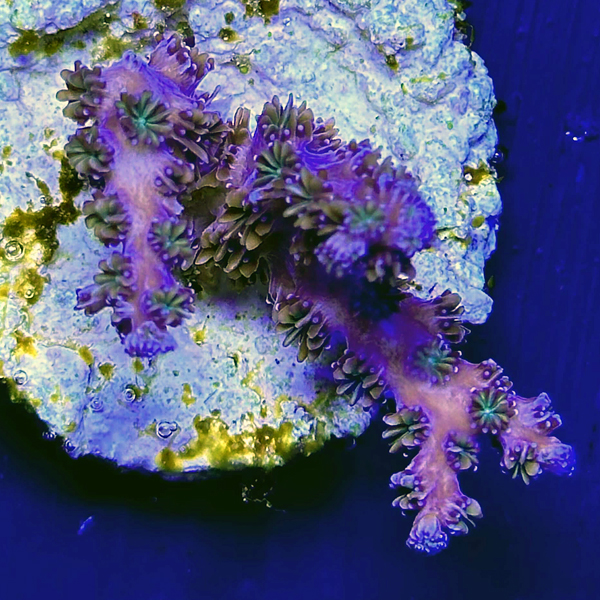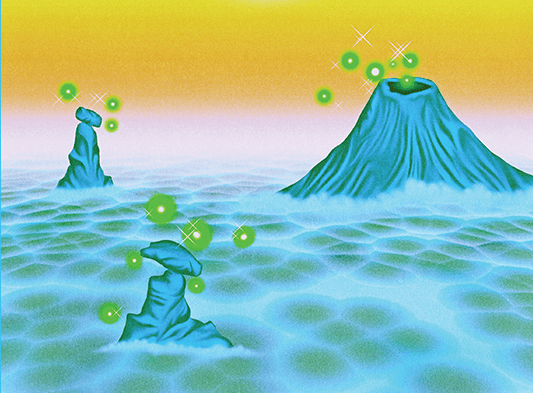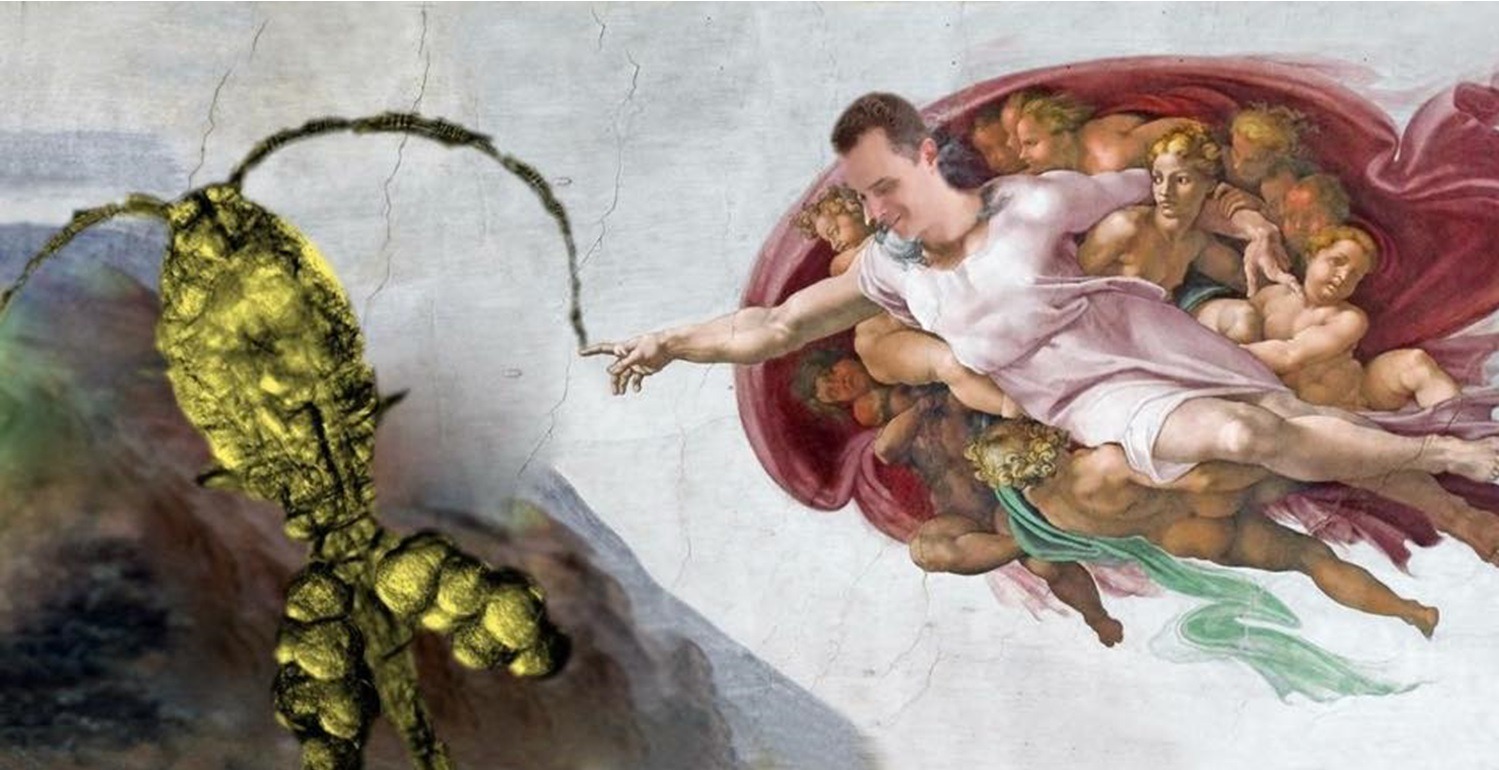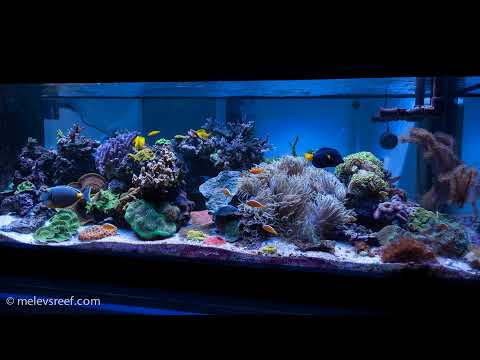Recently we learned that Biota has some unusual Branching forms of Galaxea, and they are aquaculturing them at their facility in Palua. We reached out to Felicia McCaulley to find out more:
“The Biota Group stocks many species of fully aquacultured coral from our facility in Palau. The people of Palau are strict about protecting their natural reefs, and wild coral is not available from Palau. By purchasing aquacultured coral from Biota, you are ensuring long-term jobs in remote locations and directly contributing to reducing collection from the wild.”
“We often find rare and unusual corals for propagation, and we’re excited to announce a new one. Galaxea may not be every reefer’s favorite coral because of its aggressive reputation and long sweeper tentacles, but it certainly is beautiful with its flower-like polyps. Fortunately, we’ve found an uncommon Galaxea that is rarely available in the trade called Branching Galaxea. There isn’t much documentation on this species, Galaxea horrescens, in the aquarium hobby, but it’s now being grown at Biota Palau, and F2 aquacultured frags are now being offered at an affordable price.”
“Galaxea horrescens has a beautiful, elegant branching growth pattern compared to the typical domed Galaxea seen in the trade, and reefers who have kept them report that they have shorter, less deadly sweeper tentacles. These characteristics make them more appealing to reefers than typical Galaxea.”
Feeding and Care
“Biota COO Manu Guerrero says the F1 mother colony came from a murky lagoon in Palau, and this species is easy to keep like its Galaxea cousins. It receives most of its nutrition from photosynthesis, but be careful not to give it too much bright light. It does best near the bottom of a typical reef tank.”
“G. horrescens will grow more quickly with regular targeted feedings of powdered coral food and small, meaty foods like frozen baby brine shrimp, Calanus, and gel coral foods like Easy Reefs Easy SPS Evo that are easy for its small polyps to capture.”
“This species is easy to frag because of its delicate branches. In fact, reefers need to be careful working in the aquarium so as not to accidentally break their Branching Galaxea. Loose branches can be glued to frag plugs or into rockwork with an appropriately sized hole.”
Taxonomy
“Though in the family Euphylliidae with large polyp stony corals like Torch and Hammer corals, Galaxea horrescens visually resembles branching Acropora. Originally named Oculina horrescens by Dana in 1846, the species was reclassified in 1857 and given its own genus Acrohelia. Perhaps the genus with the prefix “Acro” was a reference to its likeness to Acropora. In 2000, it was listed as Galaxea horrescens in J.E.N. Veron’s Corals of the World. A 2024 update by Hoeksema in the World Register of Marine Species also lists it as G. horrescens, the currently accepted name.”
“If you’re looking for more information on this species, some hobbyists, organizations, and government websites refer to this species as Acrohelia horrescens and sometimes Acrhelia horrescens. It’s also been misidentified as Archohelia horrescens. Though superficially similar to the nonphotosynthetic coral Archohelia rediviva of the family Oculinidae, Galaxea is more closely related to other Euphylliids than Oculinidae, and Galaxea’s care is entirely different from Archohelia’s.”
Other Palau Corals
“Biota Palau aquacultures many beautiful and unique coral species you can’t find anywhere else, as well as some corals similar to classic favorites. The F1 mother colonies are found in Palau’s murky, nutrient-rich lagoons, making them hardy and easy to keep in a typical home reef aquarium.”
“The Alien Hands Sinularia is our favorite coral that we grow. It’s hardy, easy to grow, and neon green! Not all Sinularia are created equal; this unique glowing strain comes from Palau. If you think it looks bright in daylight, just wait until bedtime. This coral glows from across the room under actinic lighting. It’s so eye-catching, it’s probably the first thing visitors will notice in your tank. Few other corals can “outshine” this stunner.”
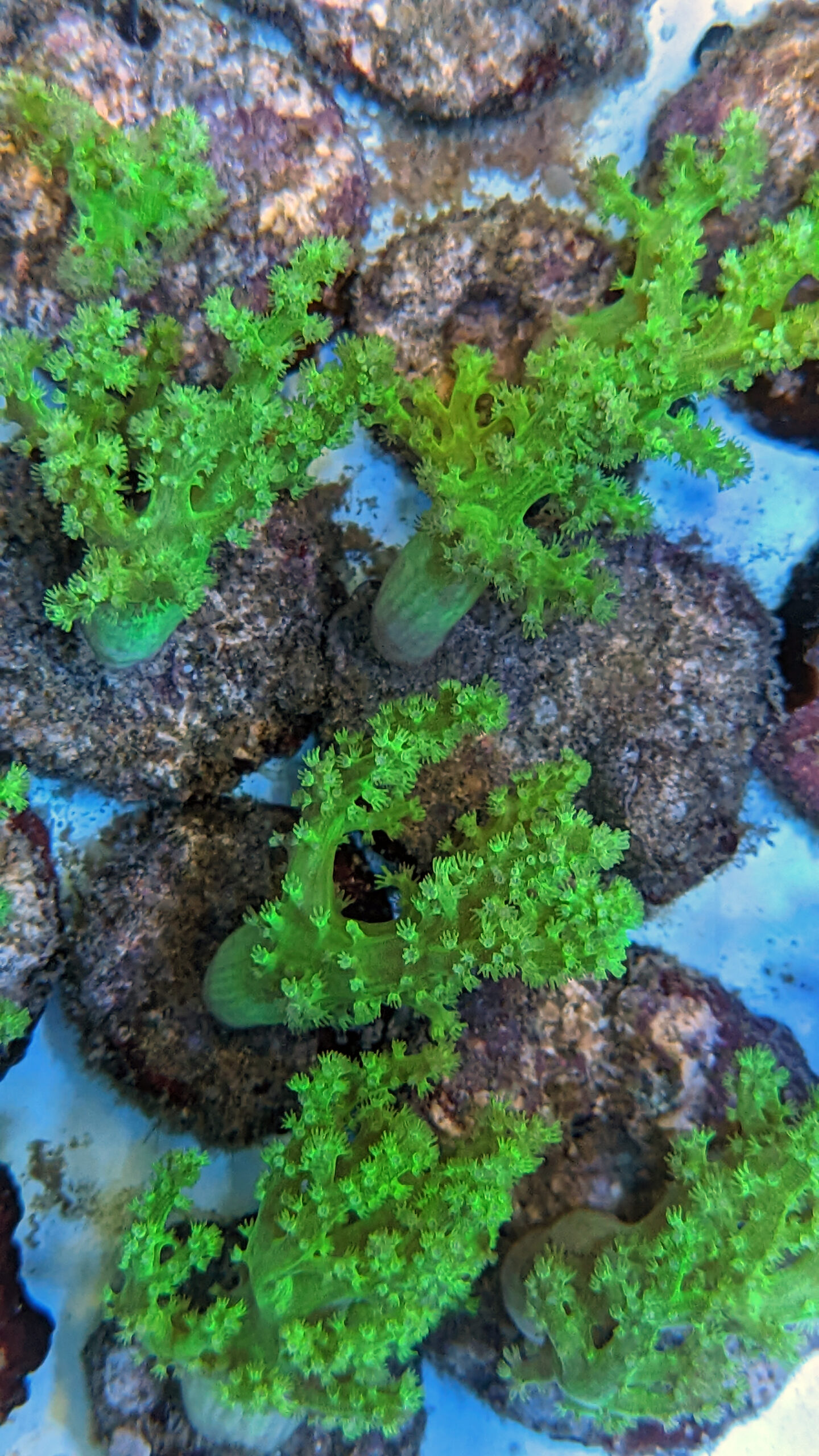
“The elegant White Willow Toadstool is hardy, colorful, and moves mesmerizingly in the flow. This variety is truly an oddball among toadstool corals. Under the right conditions, the polyps can become so long that they can be mistaken for a torch coral at first glance.”
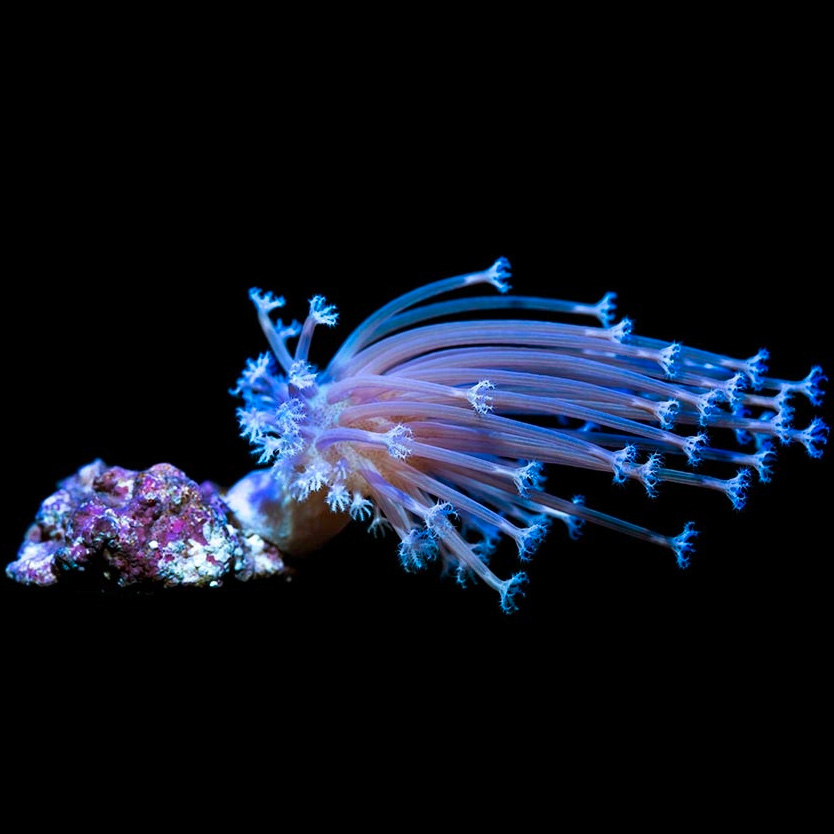
“The Purple Fur Hydnophora is a unique variety of Horn coral that is neon green with purple polyps giving it a furry appearance.”
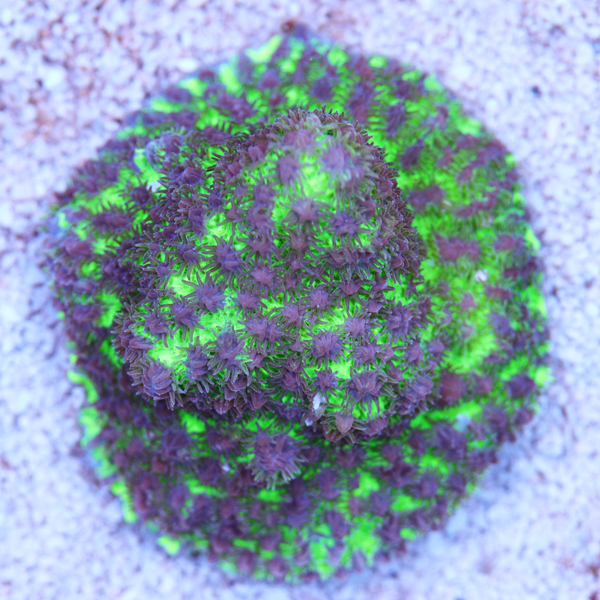
“Assorted Palau Zoanthus come in many beautiful colors. Each disc may have one or more different strains.”
“Biota has a wide variety of colorful and hardy Palau Acropora strains – Palauberry, Manu’s Blue Bottlebrush, Helen’s Elegant Smoothskin, Lumpy Space Princess, Turtle Bay, and many more.”
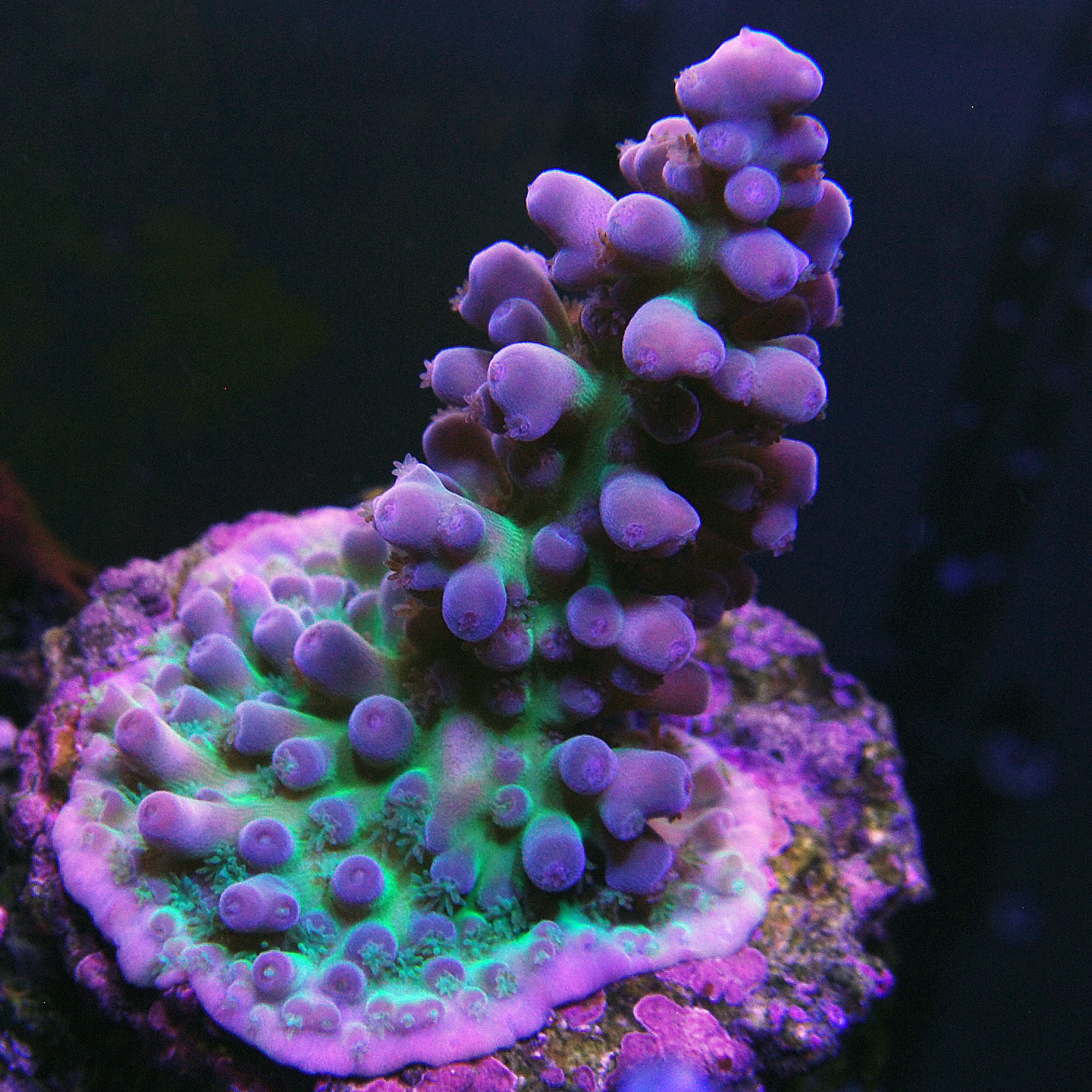
“We also culture many Toadstools, Lobophyllia, Mushrooms, Torch corals and many other Palauan corals. All are 100% aquacultured and well-suited to life in aquariums.”
If you have had experience with the strange Branching Galaxea or other coral from Palau, please comment on the Reef Builders Facebook Page.
See Biota’s Todd Gardener speak at ReefStock Chattanooga.

